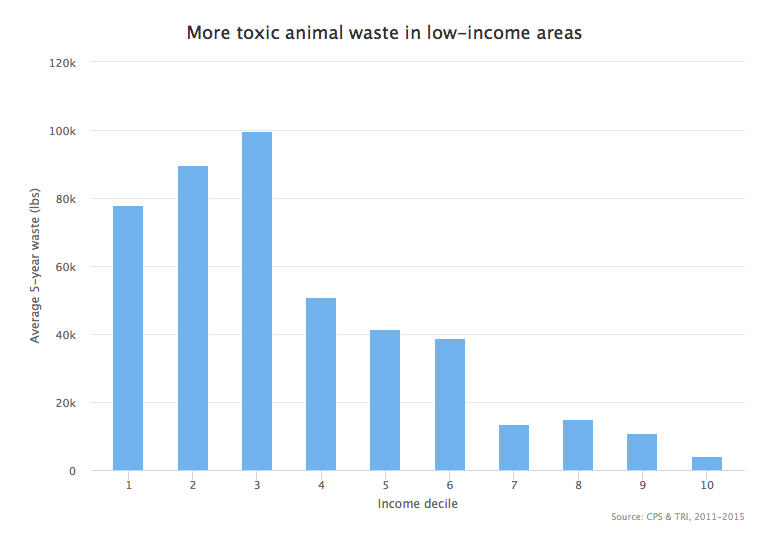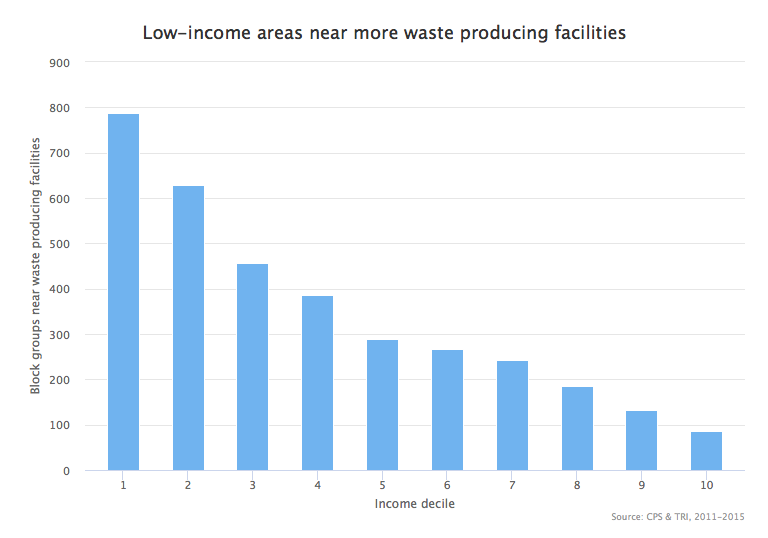A previous post mistakenly measured waste produced by slaughterhouses and meat processing facilities rather than the livestock farms themselves. What follows is an updated version of this post and code that measures livestock waste as intended, and contains additional analysis.
Industrial animal agriculture is untenable.
Animal agriculture in the United States is increasingly industrial, as shown by the dramatic inflation of waste created by the industry. This trend has wrought consequences for animals, workers, public health, and climate change. I recently examined data from the Current Population Survey and the Toxics Release Inventory to show that low-income communities bear the burden of waste and pollution produced by industrial animal agriculture, to the detriment of community health and quality of life. This post revisits these data.

The graph above shows the average amount of animal waste released over a 5-year period near communities of each income decile. Communities here refer to census block groups, which are "generally defined to contain between 600 and 3,000 people." There are 219,124 block groups in this analysis. Income decile is determined by calculating each block group's income per person. The amount of waste proximal to each block group was calculated using the method described previously.
The very clear trend is that, on average, low-income communities are closer to more animal agriculture pollution than high-income ones (F(1, 219124) = 130.6, p-value: < 2.2e-16). This relationship is partly driven by the dramatic likelihood of waste-producing animal agriculture facilities to exist near low-income areas:

The impact of animal waste in low-income areas can be devastating for a community, which is especially well documented in Duplin, NC and its neighboring hog industry. Adults living near industrial animal agriculture experience higher rates of increased blood pressure and poor respiratory health, while children experience higher rates of asthma. In addition, livestock workers have unusually high mortality rates for hypersensitivity pneumonitis, tuberculosis, asthma, and influenza.

These health impacts may be especially dramatic because the affected communities are more likely to depend on well water, which can be impacted by seeping manure lagoons that are regularly used to manage waste. Water supplies can also be impacted when these lagoons leak, or are hit by a hurricane, which has happened 4 times since 1996 and caused billions in damages.
The social untenability of industrial animal agriculture calls for not only the boycott of its products, but structural change in the United States agriculture system that gives way to human abuse and exacerbates inequality.
All code used to process data and create graphs is on GitHub.
